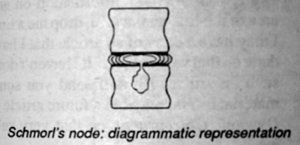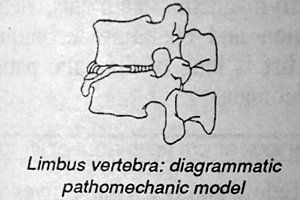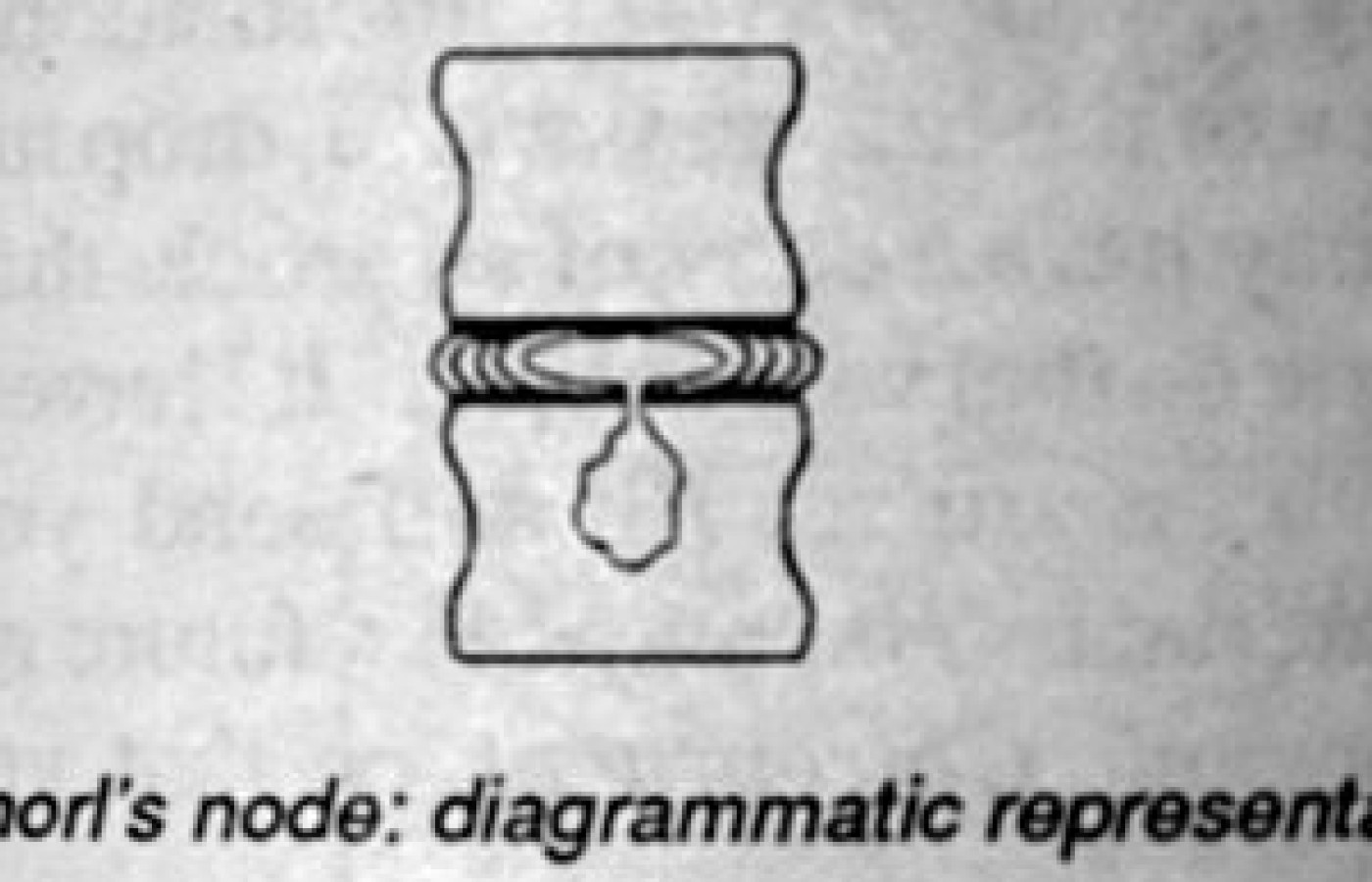New York's highest court of appeals has held that no-fault insurers cannot deny no-fault benefits where they unilaterally determine that a provider has committed misconduct based upon alleged fraudulent conduct. The Court held that this authority belongs solely to state regulators, specifically New York's Board of Regents, which oversees professional licensing and discipline. This follows a similar recent ruling in Florida reported in this publication.
Schmorl's Nodes
Schmorl's nodes are defined as herniations of the intervertebral disc through the vertebral end-plate. They were first described by a German pathologist, Christian G. Schmorl in 1927. These lesions are believed to be associated with trauma, especially in the thoracic and lumbar vertebrae.
It is generally agreed that trauma likely precipitates the actual formation of the Schmorl's node, but a possible congenital origin of a vertebral end-plate defect has also been suggested. In the maturing spine the epiphyseal plate may represent a weak spot of annular attachment, allowing for some discal material to extrude, causing an interbody nuclear herniation. It is now generally accepted that these nodes could predispose the disc to degenerative changes at an earlier onset, especially when observed in the earlier age groups.

Various configurations of nuclear herniations of the intervertebral disc have been described either occurring circumferentially through the annlus fibrosus or through the cartilage end-plates above and below. It has been noted that there is a high frequency of Schmorl's nodes in the adolescent males at the lower thoracic and upper lumbar levels; the nodes are believed to be caused by either a congenital weakness of the end-plate at the site of the notochordal canal or scarring of the degenerated blood vessels supplying the juvenile disc.

Many cases will present with back pain. The back pain is generally located at or near the thoracolumbar junction; most of the patients are adolescents between the ages of 14 and 18. Usually the patient cannot recall the specific motion that caused the onset of pain. Clinically, the pain is relieved with rest and spinal manipulation. Usually the pain is sufficient to prevent the patient from performing their particular sport at a competitive level.
Physical examination shows tenderness directly over the involved vertebrae. Paraspinous muscle spasm is usually not severe; however, the patient generally has flattening of the normal lumbar lordosis and stiffness of the lumbar spine. Forward flexion may be markedly limited. The neurological examination of the lower extremities is usually normal.
A dorsolumbar kyphosis is a distinct clinical entity and may be associated with a Schmorl's node and should be considered as a possible etiology for low back pain in the active adolescent. The symptoms are relatively mild; however, in the initial stages, participation in competitive sports is significantly impaired. The diagnosis is confirmed by characteristic radiographic findings that can be correlated with the clinical findings.
The disease is self-limiting and usually does not require extensive treatment. A careful rehabilitation program consisting of an initial rest period followed by a gradual return to full activity is usually successful in returning the athlete to full competition.



